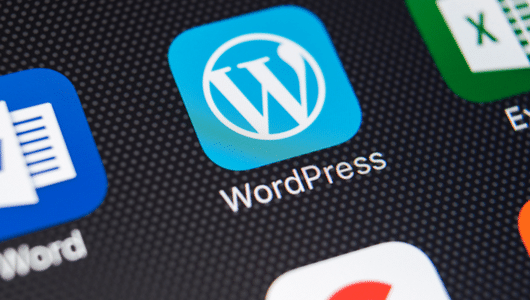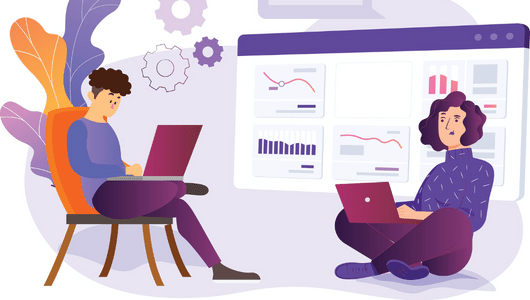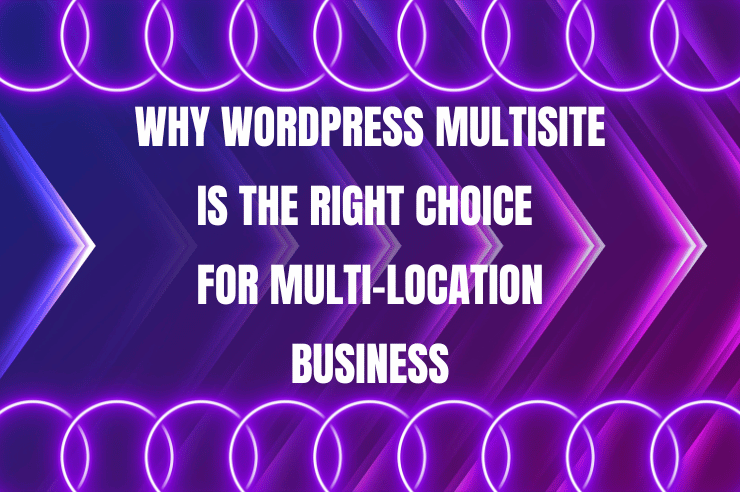WordPress Multisite is a fantastic choice for multi-location websites. It allows locations to manage their content and gives control of all properties from a centralized location.
What is WordPress Multisite?
Multisite is a feature of WordPress that allows multiple sites to share a single WordPress installation. As a result, a network of two to thousands of websites can be operated with a single multisite instance.
Before the introduction of this feature, websites each had their own WordPress installation. As a result, website administrators had to log into each site individually to manage themes and plugins, install updates, and manage content. This scenario makes management a daunting task.
With WordPress Multisite, all sites are listed in a single dashboard with one-click access to access the dashboards to location sites in many cases. Themes and plugins are shared with the entire network. The database is also shared, which makes retrieving data between sites a powerful tool. Since the database is shared, user accounts are shared between the network, meaning they do not need to be created for each website as was previously required.
Multisite Pros and Cons
Each site in the multisite network shares the same database, plugins, and themes. A shared database makes it easy to share data across websites.
For example, someone can easily add user accounts to multiple sites rather than re-creating the user again on each site. Unfortunately, this feature also means that if one website is compromised it opens up vulnerabilities for other sites on the network.
Plugin data can be shared among all websites if they are network enabled or turned off individually on a per-site basis. For example, if settings are the same on all websites, this could be set up as a network settings page to allow settings to be put in once rather than hundreds (or thousands) of times on each site. It also allows the flexibility of overriding network default plugin settings on a per-site basis if appropriately engineered.
Pros
Here are some things that make multisite a great choice:
- The database is shared between all websites, making management a breeze.
- Users are shared between all sites in the network, allowing for a single login for site management.
- The codebase is shared between sites, allowing for cohesive design, structure, and user experience on all websites (if desired).
- Plugin, theme, and WordPress core updates are much easier on multisite than on a one-by-one basis of single WordPress installations. This update process makes it easier to minimize security threats.
- By using built-in methods, data can be retrieved from sites within the multisite network. With individual sites, unifying information from multiple sources may require complex APIs to retrieve necessary data.
- Sites can be easily cloned and stood up if they share similar settings.
- Multi-Language websites are easily maintained through a multisite structure and multi-language plugins.
- All sites can be backed up at one time.
- Traffic can be easily funneled between sites in the network, improving SEO value.
Cons
With the pros of multisite, there are some caveats:
- If one site in the network is hacked, all sites on the network are vulnerable.
- An error in a shared plugin or theme can bring down all sites on the WordPress network.
- It can take a lot of work to scale infrastructure to support many sites. Choosing an agency with multisite experience is essential to your success. We partner with hosting providers that are optimized for these setups.
- Not all WordPress plugins support multisite.
- Individual site administrators cannot install plugins and themes. Installation can only be done at the network level.
- Large traffic spikes to one website will affect the other sites on the installation. This is also true of shared hosting, even in single-install environments.
- Restoring a backup from an entire network to an individual site within a network can be complex.
Multisite Best Practices
Ready to make the switch to multisite? Great! There are some best practices that you should keep in mind for your business when making your decisions:
- Multiple plugins that provide the same functionality should not be installed. For example, one plugin for contact form support should be installed rather than multiple.
- Proper user permission levels should be considered. Given all sites share the same database, limit which users have admin and network admin access to minimize risk to your websites.
- Server access should only be granted to those experienced with multisite, as introducing an error can bring down all sites, and removing a network-activated plugin can remove a piece of functionality from all websites.
- Multisite should not be used for unrelated websites that use different codebases, plugins, and data. This use introduces risk to the entire network. This scenario would be best handled with single installs and operating a management platform such as ManageWP to manage these.
Multisite Use Cases
One of the most popular use cases for multisite we are aware of is multi-location franchise websites. Each franchise location has its website. This singularity allows a location directory on the corporate website to dynamically display data from each location rather than populate a list of locations manually and link to those websites.
Another scenario is pulling in blog articles from a corporate website on location websites. For example, Location A has a services page for, let’s say, electrical. The corporate blog has many articles about electrical work. The articles on the corporate website can be queried on the Location A page to link back to the corporate website. This linking improves traffic on the corporate website as well as enhances SEO.

Shared location APIs can be set up quickly with built-in methods in WordPress. This method prevents the need to query multiple website endpoints to aggregate data in a centralized location. APIs like this are used to power our location finder components.
Shared components can be used across sites. These components can dynamically populate data such as location title, address, and hours to give a cohesive experience. Data can be accessed network-wide with ease. With a shared default theme, branding is consistent. Different brands under a single corporate umbrella can also utilize multisite. Each site can use the same theme and swap out logos, colors, typography, and content to fit brand guidelines and target the appropriate audience.
Wrapping Up
WordPress Multisite is very advantageous to multi-location franchise businesses. It simplifies the management of multiple websites into a single dashboard. It reduces maintenance burden and can improve security over single-install websites by speeding up the update process. In addition, data can be easily aggregated and queried in multisite to enable powerful components like location finders to be built.
If you are ready to improve your multi-location experience by moving over to a WordPress Multisite network, contact us today!



